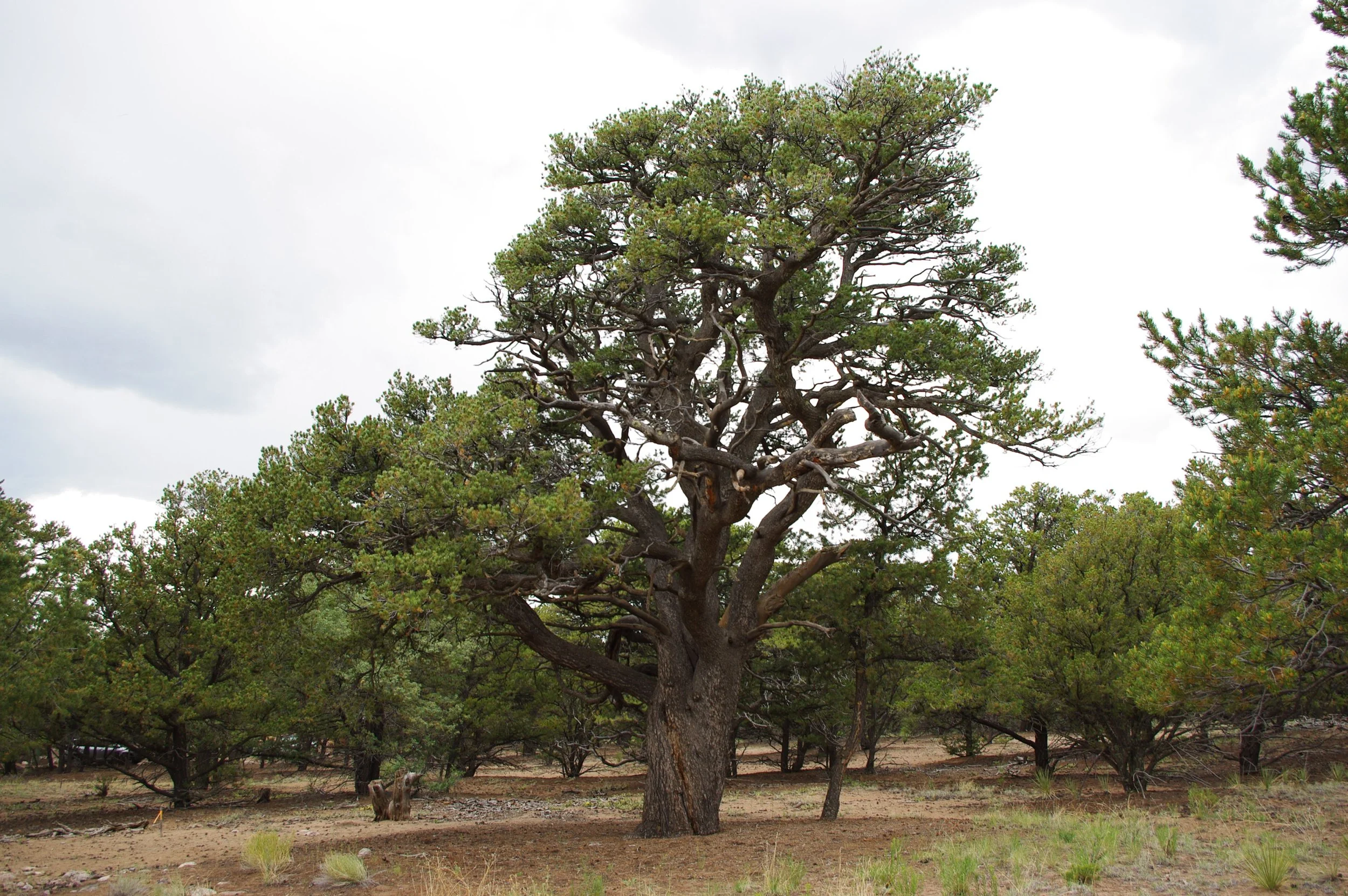pinyon pine (Pinus edulis)
Second place champion pinyon pine near Crestone.
Species info:
Leaves: Needles in bundles of two (rarely single or in threes); light green, 1–3 inches long, stiff, and slightly curved; retained for 3–9 years.
Leaflets: N/A (needles)
Leaf Surface: Smooth with a dull sheen; resinous.
Bark: Young trees have irregularly ridged bark; as the tree matures, bark becomes furrowed and platy, brown to grayish-black in color.
Flowers: Inconspicuous; male and female cones borne separately on the same tree.
Fruit: Oval, woody, 1½–2 inches long cones; scales thick, with large edible seeds (piñon nuts) up to ½ inch long.
Botanical: Pinus edulis
Family: Pinaceae
Mature Height: Up to 30 feet
Canopy Spread: Up to 30 feet; irregular, rounded crown in maturity
Foliage Type: Evergreen
Tree Shape: Pyramidal and dense when young; irregular and spreading with age
Growth Rate: Slow to moderate; long-lived (up to 500 years in native stands)
Fall Color: Evergreen
Fruit: Edible seed inside cones
Water Use: Low; very drought tolerant once established
Hardiness: Zones 3–7
Soil Preference: Prefers dry, rocky, well-drained soils; tolerates poor, alkaline soils; dislikes persistently moist conditions
Native Elevation Range: 4,000–8,000 feet
Wildlife Value: Exceptional — seeds are a critical food source for birds (especially jays), small mammals, and humans; provides shelter in arid environments
Pests/Pathogens: Susceptible to pine engraver beetle (Ips), pitch mass borer, pine tip moth, and mountain pine beetle
Planting Recommendations: A native species that is recommended for planting in most areas.
Information Sources:
Silvics of North America, Agriculture Handbook 65. USDA Forest Service
Elbert L. Little, The Audubon Society Field Guide to North American Trees -- Western Region


